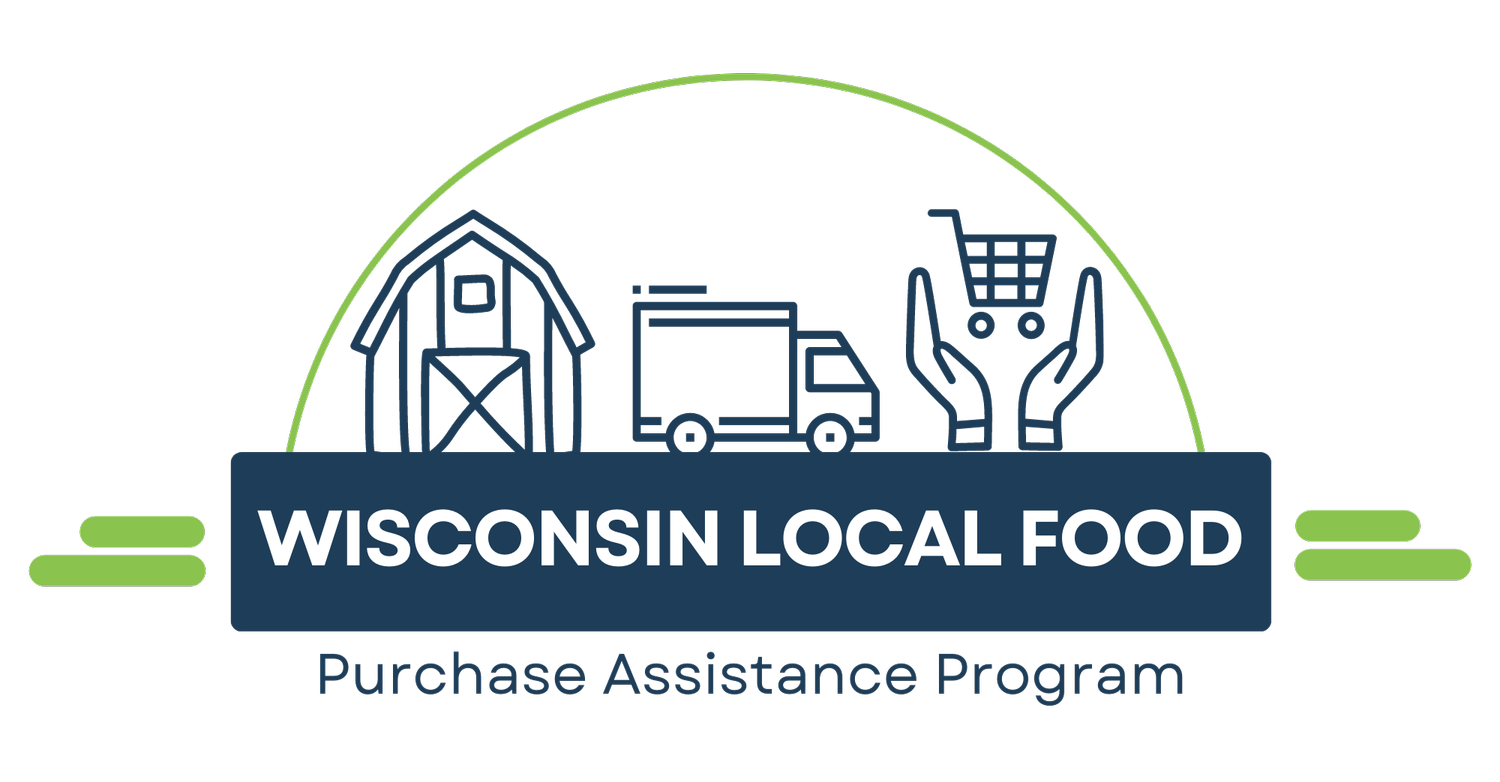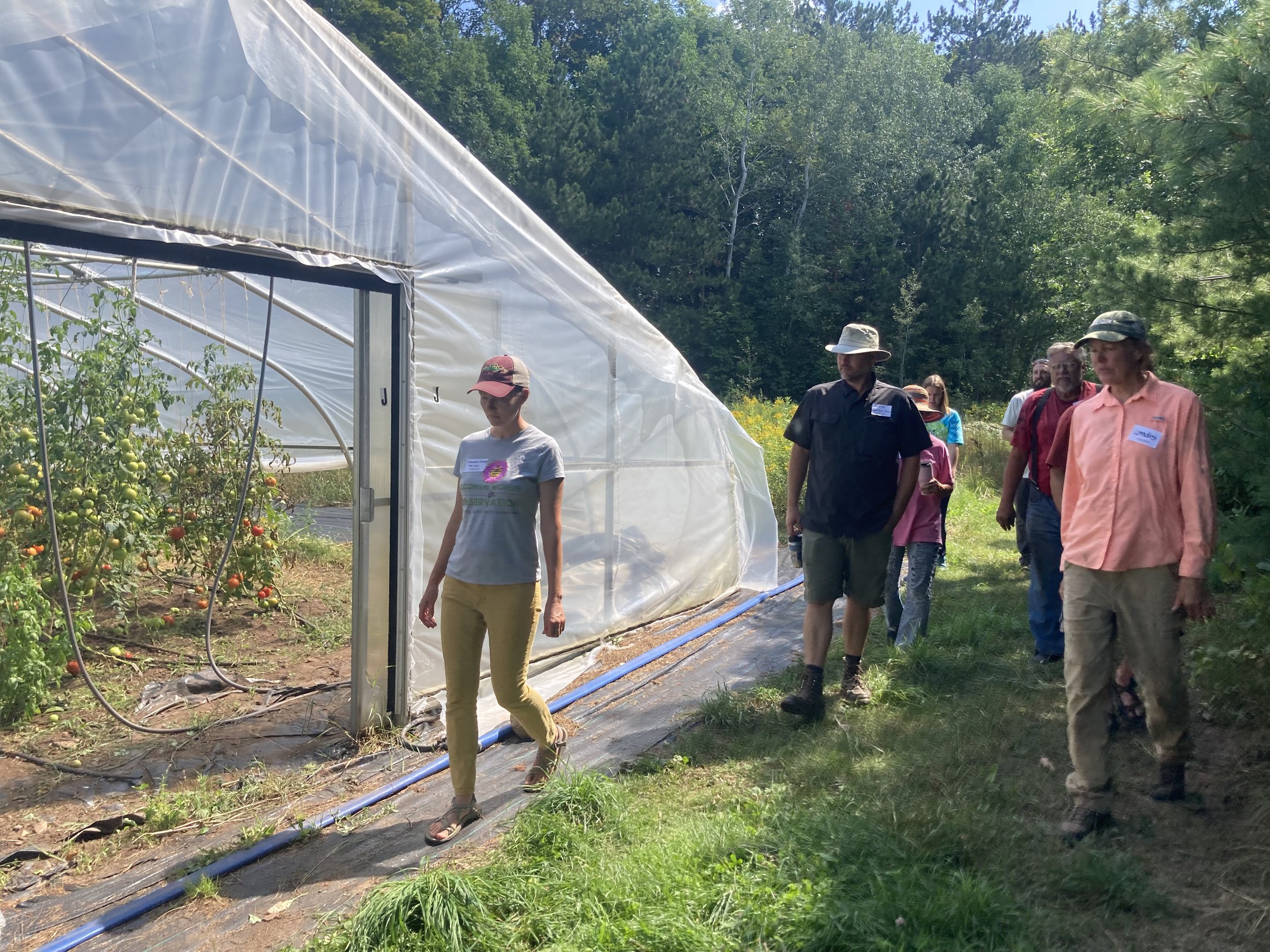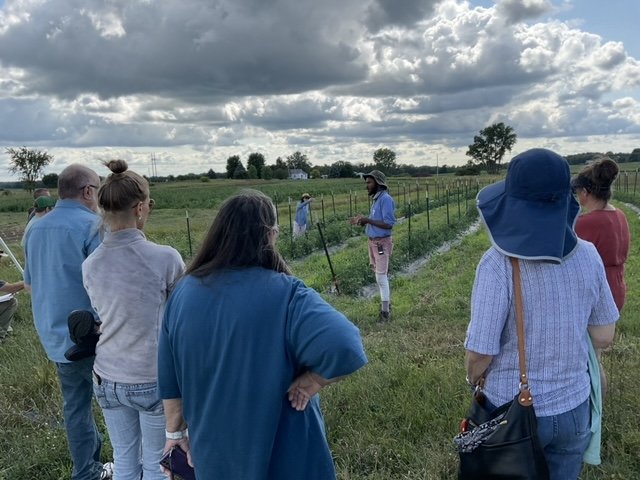
OUR STORIES
We want to hear your WI LFPA stories and celebrate the incredible journeys that bring fresh, local food to our tables!
Whether you're a farmer cultivating the land, a passionate advocate for local food systems, or someone who has experienced the impact of farm-to-food access initiatives firsthand, we invite you to share your narrative with our growing community.
Why Share Your Story?
Inspire Others
Ignite passion and motivate others to champion BIPOC and historically underserved farmers, fostering enthusiasm for farm-to-food access practices.
Garner Understanding
Help people learn how this program assists farmers in improving and expanding their ability to meet buyer expectations and sell into wholesale markets
Foster Connection
Connect with individuals who share a passion for locally sourced, delicious food and are eager to see these initiatives flourish throughout Wisconsin.
Showcase Community Impact
Showcase the positive impact of network building and connections formed with aggregation partners and food access programs in your Wisconsin community.
Build for the Future
Share how WI LFPA has expanded your businesses, created resilient supply chains, and connected you with partners addressing food security. What aspects of your project could be replicated by others? How will you sustain the efforts after WI LFPA?
Your stories will help us communicate the breadth of work happening through WI LFPA.
THANK YOU!
Heritage Grange - Nina Much
Heritage Grange Farm Honors Family and Builds Community: A Wisconsin Local Food Purchase Assistance Story
In 1962, Nina Much’s parents purchased a farm on County Road O in Manawa. Their dream was to become pastured dairy farmers and support their growing family. Much was just one year old at the time and by nine years old she was helping her father milk their family’s cows. Sixty-one years after her parents originally purchased the farm, Much is honoring their legacy by managing a small herd of cattle on the property and enriching her community’s food system, with support from the Wisconsin Local Food Purchase Assistance Program (WI LFPA).
Much’s farm, Heritage Grange, is a testament to her family’s history on the land as well as her dedication to the food security of her neighbors.
“A part of me is trying to honor my mom and dad because I know how hard they worked to build the farm and build hope for their kids,” Much said. “I also wanted to do something local. I wanted local people to know where their meat was coming from and that they could actually just drive past my farm and see the animals.”
Much’s inspiration to return to farming as an adult came in 2018 when she was invited to attend a meeting for landowners and farmers living and operating within the Bear Lake/Little Wolf Watershed. She heard a presentation from the Waupaca County Land and Water Conservation Office and the local Natural Resources Conservation Service (NRCS) office which inspired her to learn more about managing her family’s property.
“I recall that, throughout my younger years, our family spent a great deal of time along the banks and on the Little Wolf River, whether it was fishing or trapping,” Much said. “Protection of the river and streams is vitally important.”
As a landowner Much was interested in the management decisions she could make to help ensure that she was not contributing to groundwater contamination by poor land use practices. After attending the informational meeting, Much began working with both agencies more in depth.
“I started attending pasture walks and other educational opportunities which brought back childhood memories from growing up on the farm back in the 1970s,” she said.
By 2019, five acres of Much’s land was fenced in with a waterline. In the spring of 2020 she purchased her first three head of beef steers to begin seasonal rotational grazing.
“When we were hit with the COVID-19 pandemic and the isolation, I knew people were going to need food,” Much said. “If I could sell beef in quarters and halves, families and friends would be able to stock up on what they needed; I sold out the first year.”
In the fall of 2022, the expansion of Much’s farm began with the conversion of an additional 25 acres into pasture. Fencing was completed prior to Thanksgiving and in the spring of 2023 water lines were installed, all with the help of the Environmental Quality Incentives Program (EQIP) through the local NRCS office in Waupaca. As of 2023, Much is rounding out her fourth year in operation.
“I went from managing five acres and three head of cattle to grazing 15 head of cattle on 30 acres, with the rest of the farmland being utilized for making hay,” she said. “With the drought this year, running only 15 head was a good plan, as there was enough feed available to meet the need.”
When information about the WI LFPA Direct to Farmer grants was released in 2022, Much applied immediately. She was chosen as one of the 165 farmers to participate in the first year of WI LFPA, which provided her guaranteed income through the sale of five of her steers into the program. The additional benefit of participating in the WI LFPA program for Much was the contribution she could make to her community and the local food system.
At the end of the 2023 season, the animals that Much sold to the WI LFPA program were delivered to a butcher and then transported to food pantries by Wisconsin Food Hub Cooperative. A portion of Much’s meat went to each food pantry in Waupaca County.
“I wanted to be able to make a difference in my immediate area by working with the food pantries within Waupaca County,” Much said.
In September 2023, Much hosted an event on her farm for the Waupaca County food pantry volunteers with food and music as a way to build community around the local food system and inspire a sense of interconnectedness.
"The volunteers deserve a thank you and [the event] was a way for them to meet the farmer that would be bringing the meat to their pantry. This new innovative approach - connecting the farmer and the food pantries directly - is helping thousands of families in one county as well as underserved farmers who can provide delicious, nutritious food."
Hermit Creek Farm
Wholesaling to Food Distribution Programs on Saturday, August 19, 2023
Gathered at Hermit Creek Farm on a hot sunny August afternoon as the humidity picks up, 11 participants learned about the history of Landis and Steven’s dream to turn an 80-acre homestead into a busting CSA farm. Hermit Creek Farm is located off the grid and away from electric lines therefore the farm relies heavily on solar power – having found tricks with water lines and little refrigeration. Also, a factor into why they decided to purchase their second farm, Beaver Brook. With 2 farms in play, Hermit Creek has mainly established high tunnels, smaller plantings, such as herbs, and is the seedling starter farm. Much of the in-ground vegetable growing takes place at Beaver Brook Farm.
Having been in the CSA business for the past 30 years, Landis has established long-lasting relationships with clients to customize and juggle each end users’ own style and process in requesting product availabilities. 60-70% of their revenue comes from their CSA business with 240 clients at 85% retention. Transitioning from farmers’ market (direct consumer) to wholesaling, they sell mainly to co-ops in northern WI and near Duluth, MN – transporting their own products to each location.
This year, they decided to spend $4,000 to work with an agency to obtain H2A farm workers from Mexico. H2A workers are paid an overall rate of $25/hour, including the cost of lodging, transportation, and other expenses. Hiring H2A workers is not to replace them with U.S. workers. Hiring H2A workers has bumped U.S workers' pay rate to $17.34/hour. This opportunity heightened their communication methods and given an opportunity for them to learn Spanish. Having H2A workers on their farm has people who really enjoy being on a farm, know the work (and produce), and like doing farm work. A big reason that led them to make this decision – it was becoming too hard to recruit and hired U.S workers that enjoyed the farm work and who, realistically, wanted to work full-time during the summer months. “It is expensive and a high commitment (to get H2A workers) but very joyful.” – Landis.
Caravanned to Beaver Brook Farm, attendees took a cooling off break to sit inside the air-conditioned pack shed before continuing the tour and conversations to check out the equipment shed, luscious fields of vegetables and cover crops, and grazing land for lambs.
Ending the event on a note of thanks to the WI LFPA program in giving producers’ a helping hand with providing pre-season payments to help them off-set a little bit of their wholesale expenses and for working with producers to honor as much of their asking price per product as possible. Sharing that some of the hardest barriers to wholesale are non-negotiable prices and each buyer having too much dictation with their own specifications on packaging and labeling. “When was it made that it was okay for farmers to be the lowest paying occupation.” - Tenzin Botsford
Central Rivers Farmshed
In June, Central Rivers FarmShed partnered with the WI LFPA Program to host an educational and networking event. The event included a tour of their greenhouses, cold storage and commercial kitchen facilities. Attendees learned about FarmShed’s local food access programs; Sib Pab and Frozen Assets. Sib Pab provides culturally appropriate meals to Hmong elders and community members with disabilities, while Frozen Assets contracts directly with local farms for the purchase of certified organic vegetables for Farmshed to process, freeze, and distribute to the local community.
Full Circle Community Farm
Attendees arrived to Full Circle Community Farm in Seymour, Wisconsin in between short and spotty rain showers. It was a welcome occurrence due to the dry weather and the farmers in attendance were hoping rain was falling on their own fields.
The event started with some refreshments and time to talk and network with each other. Five Wi-LFPA farms were accounted for in the group, with some sharing how important this program has been for them this year. After an introduction from farm owners Andrew Adamski and Heather Toman, as well as apprentices Zachary and Olivia, the tour got underway.
Full Circle Community Farm’s (FCCF) pack shed was cleaned and clear. Thursday’s are their least busy day for packing orders. Heather shared how their product is entered into a tablet mounted on the wall, flows through the pack-shed to be cleaned and packed, and ultimately ends up in one of their two walk-in coolers powered by cool-bots. Attendees also got to see their refrigerated van and cooler-trailer.
As the rain slowly stopped, we walked out to see the water-wheel transplanter on the brand-new Kubota tractor the farm purchased, as well as their two greenhouse set-ups. At the high tunnels, Zachary explained their crop rotation and how they will mow and prep the beds now that the snap peas are done.
Out in the fields Olivia showed three different beds. One planted in lettuce with the water-wheel transplanter, one bed of green beans direct seeded and one bed of dill and cilantro planted with the paper-pot transplanter. Seeing the difference in how these crops look and the benefits of each type of planting style was very informative.
Rotating 90 degrees from right where we were standing looking at this field, we could see the cattle grazing about 500 feet away. These pastures have been in Andrew’s family for the past few generations and Andrew spoke fondly about working with nature rather than against it for all those years.
After a walk back to the barn, those interested in seeing the pastured pigs drove a short distance across the street and those that wanted to keep networking enjoyed some time together. Events like these are so beneficial not only to learn, but to connect with others in this industry and understand that we are not alone and in fact, stronger together!




























